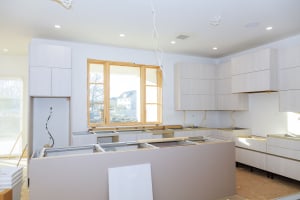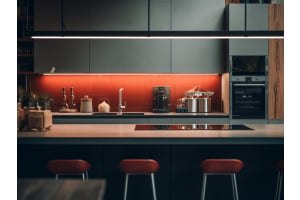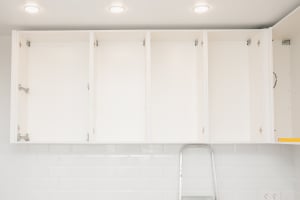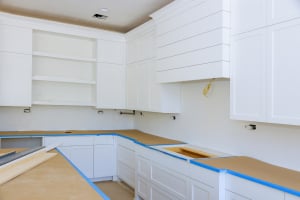The vertical grooves of fluted panels add texture and style to elevate any space. Whether you're looking to cover a large area in your home or a smaller wall, fluted panels can be just what you need to enhance your interior design.
You can measure fluted wall panels using measuring tape to note the height and width, but you also need to factor in any obstacles, trim, and molding. This step-by-step guide to recording measurements will help you achieve precise and professional results!
Measure the Width
The first step is measuring the width of your fluted panels and the wall where they will be installed. You may not need to calculate the panels if purchasing a premade product. 27estore's fluted panel measurements are available on the product's packaging and our website. One difference between wall paneling and cladding is that paneling has more straightforward measurements, making it easier to install.
When measuring the wall, use your tape horizontally from corner to corner. You may need to measure multiple points of the wall to accommodate any slopes. If the wall is a different width from top to bottom, you can look up how to cut fluted panels to make the proper adjustments.
Measure the Height
The next measurement you need is the height of the panel and your wall. Measure the wall from floor to ceiling at its highest point. Once you have the wall's measurements, you can find the total square feet by multiplying the height and width. Compare that number to the panel's size.
Again, most companies providing wall paneling will give you the measurements in advance so you know how much to order. One piece of our fluted paneling covers 2.35 square feet, and a single pack covers 9.4 square feet.
Account for Obstacles
Consider any obstacles that you may have to work around when installing paneling. Measure any windows, doorways, or fixtures on the wall. Record the width and height of each obstruction and subtract their total area from the wall size.
This number will help you adjust the amount of paneling you'll need to cover the wall. You'll also need these measurements to cut the paneling to fit around these objects.
Consider Panel Trim and Molding
Another calculation you'll need to consider is paneling, trim, or molding. Some fluted panels come with a shiplap edge or other styles of trim. You also have to account for crown molding already on your walls.
You can measure the wall's height from the edge of the crown molding to the baseboard trim you plan to keep. Factor in these dimensions when determining the wall surface you need to cover.
Double-Check Your Measurements
It never hurts to double-check your work, especially when there's money involved. If you get the dimensions wrong and have to order more paneling, it could take weeks to arrive.
Measure the width and height of your wall and any obstructions, then compare the numbers. If there are any inconsistencies, you may need to measure a third time.
Consult Manufacturer Guidelines
The manufacturer of your panels may have guidelines or specific instructions on measuring and installing the type of fluted wall panels you are using. They also may give the dimensions for the wall paneling; however, you can always double-check the manufacturer's calculations by measuring the wall panels.
Time to Get Started
Accuracy is your key to success when measuring fluted panels. Taking your time when measuring the width and height could save you in the long run. Remember to account for trim and molding in your calculations, and it never hurts to double-check your work. You'll have a beautiful feature wall in no time!













